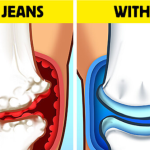Cryopreservation of stem cells might sound like something out of science fiction, but it is grounded in real, ongoing research. Some studies suggest that baby teeth contain stem cells with the potential to regenerate parts of the body, which has led to the concept of tooth banking — storing baby teeth for potential future medical use. However, while the science shows promise, it’s important to separate fact from speculation.
What Are Stem Cells?

Stem cells are unique cells with the ability to divide and develop into various cell types, including muscle, bone, and nerve cells. There are two main types of stem cells:
- Embryonic stem cells: Found in embryos during early development.
- Adult stem cells: Found in adult tissues, including bone marrow and fat.
Baby teeth contain a specific type of stem cell known as SHED (Stem cells from Human Exfoliated Deciduous teeth). These cells have shown some ability to form dentin (a hard tissue of teeth) and other structures similar to bone. According to Dr. Pamela Robey from the National Institute of Dental and Craniofacial Research, SHED cells may have promising regenerative potential, though much of this research is still in its early stages.
Biological insurance

Baby teeth are a source of stem cells like bone marrow and can be saved as a form of biological insurance. That said, scientists, doctors, and dentists are still divided as to whether or not it is worth doing right now.
“Right now, I don’t think it is a logical thing to do. That’s my personal opinion,” says Dr. Robey. “That’s not to say that in the future, somebody could come up with a method that would make them very beneficial,”
Potential Uses of Stem Cells from Baby Teeth
Some potential applications of stem cells include:
- Regenerating dental pulp
- Repairing damaged tissues
- Possibly treating blood-related diseases such as leukemia, although this has not yet been proven with baby teeth stem cells
While the potential is exciting, it is essential to note that stem cells from baby teeth have not been widely used in clinical treatments yet. Most applications, such as using these cells to treat diseases like cancer or regenerate major organs, remain theoretical or are still in experimental phases.
Baby Teeth Cryopreservation aka ‘Tooth Banking’

Tooth banking is a service that allows parents to store their children’s baby teeth, hoping that the stem cells within may someday be used for medical treatments. Companies like Store-A-Tooth and ToothBank offer such services, where they extract and preserve the stem cells from the teeth. These cells are then cryogenically stored, potentially to be used in the future for regenerative therapies.
Tooth banking can be quite expensive. For example, Store-A-Tooth charges an initial fee of $1,747 plus an annual storage fee of $120. It’s crucial to weigh the costs carefully, especially given that the timeline for practical use of these stem cells is uncertain. While storing stem cells from baby teeth could provide “biological insurance,” there’s no guarantee that current research will lead to widely available treatments in the near future.
Further Stem Cell Research Needed

Research is still ongoing to fully understand the regenerative potential of SHED cells. A 2018 study from the University of Pennsylvania demonstrated that dental tissue could be generated using stem cells from baby teeth, but experts agree that it’s still too early to consider these cells a reliable source for clinical applications. The technology needs to mature before it becomes a mainstream medical option.
Conclusion
The idea of cryopreserving stem cells from baby teeth offers an intriguing glimpse into the future of personalized medicine. However, while the science is promising, it is still in its early stages. Tooth banking might offer future medical benefits, but as of now, it remains a speculative and costly investment. As more research unfolds, we may see the true potential of SHED cells realized, but for now, it’s important to manage expectations and carefully consider the decision to bank baby teeth.
READ MORE
- Does the inside of your ear itch? Here’s what it means and how to treat it
- The Hidden Power of Goosegrass: The Unpretentious Wonder of Nature

